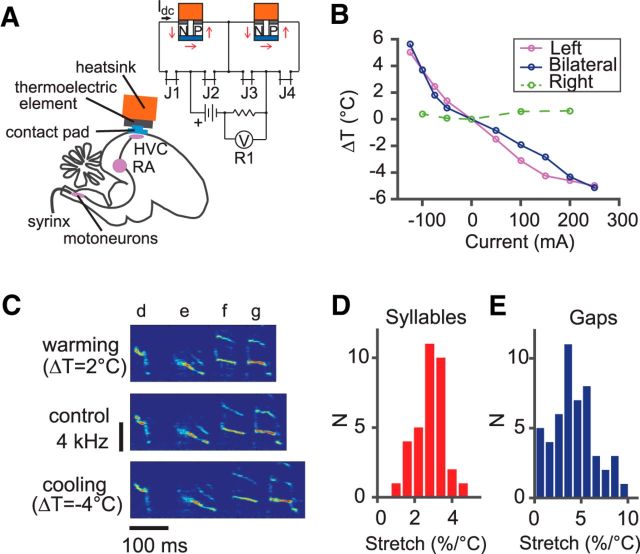Figure 2.
HVC temperature manipulation. A, Setup of the experiment. The contact pad is placed on the surface of the brain and its temperature is altered by electric current flowing through the thermoelectric element. Top right, Schematic of the bilateral/unilateral cooling device. J1–4 are jumper connectors. Connecting J1 and J4 enables the current to pass through both Peltier modules; connecting J1 and J3 enables only the left module; and connecting J2 and J4 enables only the right module. B, Dependence of temperature within HVC (at a depth of 0.5 mm) on the current applied to the thermoelectric element. The blue line shows the temperature of one HVC during bilateral manipulation of temperature. When manipulation is restricted to only the left HVC, the purple line indicates temperature measured in the left HVC and the green dashed line indicates temperature measured in the right HVC. C, Cooling HVC increases the syllable and the gap durations, whereas heating decreases them. As an example, a song segment consisting of four syllables is shown at different HVC temperatures aligned to the onset of the first syllable. D,E, Histograms of the fractional temperature-induced duration changes of all syllables (left) and gaps (right) in our dataset. Syllable durations are stretched by 2.8 ± 0.9%/°C (mean ± SD, n = 34) and gap durations are stretched by 4.2 ± 2.5%/°C (n = 50).

